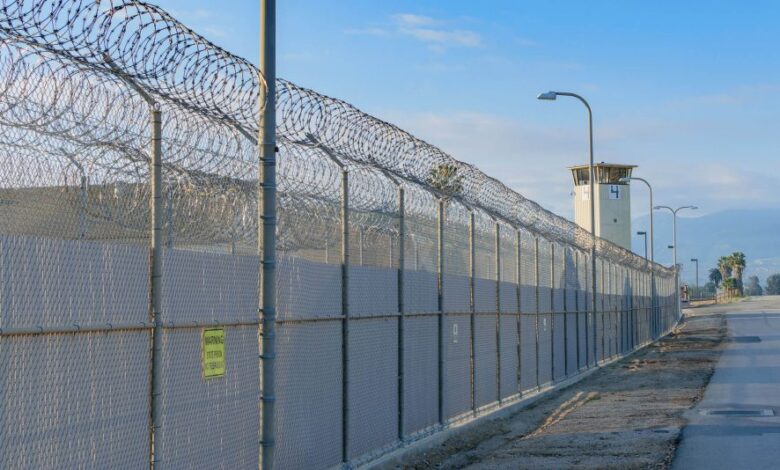Is Your Facility’s Perimeter Actually Secure? Insights from Security Detention Equipment Contractors

Most facilities rely on perimeter barriers to keep their property safe, but how many of those barriers actually hold up under real threats? What looks secure at first glance can have hidden vulnerabilities that go unnoticed until it’s too late.
Detention equipment contractors specialize in identifying and reinforcing these weak points, ensuring that facilities have the highest level of security possible.
Weak Points in Perimeter Barriers That Compromise Security
A perimeter fence may seem strong, but even minor flaws can turn it into an easy target. Chain-link fences, for example, are common in high-security areas, yet without the right modifications, they can be cut or climbed with minimal effort.
Weak welds, aging materials, or gaps at the base of a fence create openings that unauthorized individuals can exploit. Even reinforced concrete walls can develop cracks or structural weaknesses over time, making them less effective against forced entry.
A security detention equipment contractor understands that the strength of a barrier is only as good as its weakest point. Installing anti-climb fencing, reinforcing panels, and using tamper-resistant fasteners can make a significant difference.
Additional deterrents like razor wire, motion sensors, and underground barriers can further strengthen perimeter security. Without these reinforcements, a facility may be far more vulnerable than it appears.
Common Oversights in Gate and Entryway Reinforcement
Gates and entry points are often the most vulnerable areas of any secured perimeter. Even if the fencing or walls are impenetrable, an improperly secured gate can render the entire system ineffective.
A surprising number of facilities still rely on outdated locks, basic padlocks, or simple keycard access systems that don’t provide adequate protection against modern threats. Weak hinges, insufficient reinforcement, and poor alignment also create security gaps that can be exploited.
Detention equipment contractors emphasize the importance of reinforced gate structures, high-security locking mechanisms, and access control systems designed to withstand tampering.
Motorized gates with impact-resistant barriers, biometric scanners, and layered authentication measures significantly reduce the risk of unauthorized access.
Many breaches occur not through a lack of barriers, but through poorly secured access points that weren’t designed with forced entry attempts in mind.
Impact-Resistant Materials That Withstand Forced Entry Attempts
Not all materials offer the same level of protection. Many facilities still use standard steel or aluminum fencing, which can be bent or cut with industrial tools.
A well-secured perimeter needs impact-resistant materials that can handle high-force attacks, including vehicle ramming and tool-assisted breaches. Reinforced steel, composite panels, and ballistic-rated materials offer far superior durability compared to traditional fencing or concrete barriers.
Security detention equipment contractors often recommend integrating crash-rated barriers, reinforced security doors, and high-strength fencing to create a truly fortified perimeter.
These materials not only resist impact but also deter attempts by making breaches significantly more difficult and time-consuming. When every second matters in security, having materials that delay forced entry attempts can be the difference between a contained situation and a major security breach.
Proper Spacing and Layering for Maximum Perimeter Protection
A single layer of security is rarely enough to stop a determined intruder. Many facilities make the mistake of relying on one fence, one wall, or one checkpoint to prevent unauthorized access.
In reality, effective perimeter security is built on multiple layers. Proper spacing between barriers, staggered entry points, and reinforced secondary perimeters create additional obstacles that make breaches far more difficult.
Detention equipment contractors focus on creating security zones that force intruders to slow down and expose themselves to detection systems.
A layered approach may include an outer fence with anti-ram barriers, a middle layer with reinforced security doors and gates, and an inner perimeter with high-security locks and surveillance.
These layers work together to create a system that is not only difficult to penetrate but also provides multiple opportunities for intervention before a full breach occurs.
How Regular Inspections Reveal Hidden Security Vulnerabilities
Even the best security systems degrade over time. Rusted fences, worn-out locks, and outdated technology can all create vulnerabilities that go unnoticed until a security breach occurs.
Regular inspections by a security detention equipment contractor help identify these weaknesses before they become serious problems. A facility’s perimeter may look secure on the surface, but small cracks, loose bolts, and unseen wear can compromise the entire system.
Routine assessments ensure that all barriers, gates, and security reinforcements are functioning at their highest level. These inspections also allow for upgrades to new technology, such as advanced surveillance systems, smart locks, and modernized perimeter alarms.
Without regular evaluations, security measures that once provided excellent protection may become obsolete, leaving facilities exposed to evolving threats.




